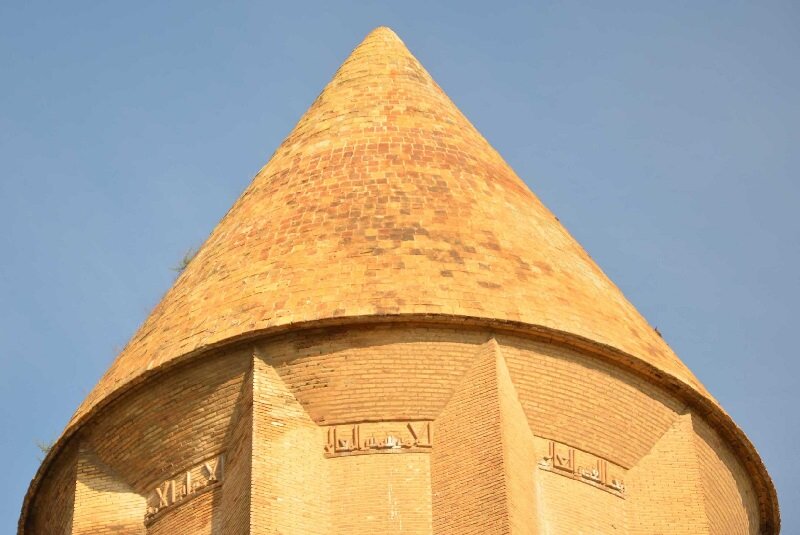UNESCO-listed Gonbad-e Qabus undergoes restoration amid concerns over vertical cracks

TEHRAN - The iconic Gonbad-e Qabus, a UNESCO-listed 1,000-year-old brick tower located in Iran’s Golestan province, is undergoing extensive studies and restorations to address vertical cracks on its structure.
A team of researchers in collaboration with experts from the Shahid Beheshti University, are analyzing the depth, age, and potential risks of these cracks, with concerns over possible damage from land subsidence in the Gorgan plain and possible impacts of a severe 2019 flooding, ILNA reported on Sunday.
Abdolmajid Nourtaghani, the director of the Gonbad-e Qabus World Heritage site, confirmed that approximately 500 damaged bricks, some dating back a millennium, are being replaced.
He explained that in 2019, flooding around the tower caused significant waterlogging, leading to excessive plant growth that damaged parts of the structure.
This necessitated the removal of vegetation and the initiation of restoration projects approved in 2022, the official said.
As part of the ongoing restoration, bricks affected by plant growth and moisture are being replaced with newly produced bricks closely resembling the original materials. Special attention is being given to preserving intact ancient bricks and replacing damaged ones from previous restorations in the 1960s and 1970s.
Additionally, a one-year, three-axis monitoring project is underway to assess the impact of land subsidence in the Gorgan plain on the tower. Satellite data indicate subsidence in the area, raising questions about its effect on the structure. The results will determine whether Gonbad-e Qabus has been significantly impacted by this geological phenomenon.
Nourtaghani also emphasized the importance of using materials to prevent moisture transmission and reduce plant growth on the historic tower, ensuring its long-term preservation.
The iconic tomb tower is of high architectural importance as an exemplar and innovative design of early Islamic-era architecture. Visible from great distances in the surrounding lowlands near the ancient Ziyarid capital, Jorjan, the 53-meter high Gonbad-e Qabus dominates a modern town of the same name laid out around its base in the early 20th century.
Its hollow, cylindrical shaft of unglazed fired brick tapers up from an intricate geometric plan in the form of a ten-pointed star to a conical roof. Two encircling kufic inscriptions commemorate Qabus Ibn Voshmgir, Ziyarid ruler and literati as its founder in 1006 CE.
As mentioned by UNESCO, the monument bears testimony to the cultural exchange between Central Asian nomads and the ancient civilization of Iran.
Narratives say the tower has influenced various subsequent designers of tomb towers and other cylindrical commemorative structures both in the region and beyond. The structure capped by an eye-catching conical roof boasts intricate geometric principles and patterns which embellish parts of its load-bearing brickwork.
AM
